|
When running with the weighted rucksack – I use the two broad aspects of Daoist breathing usually termed ‘natural’ and ‘correct’. Bear in mind that this ‘moving’ activity is not the complex seated ‘neidan’ practice and is not subject to that type of control. Instead, as the bodily frame is placed under intense pressure, what is required is deep and full breaths, usually in and out of the mouth. This is because unlike the state of perfect balance that is constructed during the practice of Taijiquan (where the breath is taken in through the nose and expelled through the mouth) - running with a weighted rucksack overloads the biological processes to such a high degree that the maximum amount of oxygen is required to maintain its function. This is achieved by breathing in and out through the mouth. Once the parameters are set, what then is ‘Daoist’ about this practice? Natural breathing requires breathing deeply into the lower abdomen – this emphasises the use of the middle and lower-lung capacity – with the minimum of upper-lung capacity. Correct breathing requires the pushing-up of the diaphragm so that the inward breath is compressed from the expanded lower-lung and into the middle and upper-lung. Correct breathing inflates the usually neglected upper-lung capacity which is full of highly dense oxygen-absorbing body-cells. Generally speaking, the upper-lung is often used by the body in ‘emergency’ breathing if the body has become injured, ill, or is inhabiting an oxygen-deficient environment. The ancient Daoists seem to have understood that there is something special about the little used upper-lung within everyday life – and with this understanding they formulated a physical method of breathing that allows a voluntary access of this area. I tend to use ‘natural’ breathing when running with the weighted rucksack – but I switch to the ‘correct’ method when I need to stop to cross the road and/or significantly change direction. I usually take three full ‘correct’ breaths (which oxygenates the body to a greater degree) and then switch back to ‘natural’ breathing which is what I refer to as ‘maintenance’ breathing. Correct breathing in this context is not ‘maintenance’ breathing and should not be confused with the purpose of ‘natural’ breathing. Furthermore, the perspective I am giving here only makes sense when discussing weighted rucksack running. As weighted rucksack running using ‘natural’ breathing dramatically diminishes the oxygen levels in the body (stabilised through fitness levels) – ‘correct’ breathing represents a rapid intake of new oxygen by switching the emphasis of how the breath is managed.
0 Comments
Our family style of Hakka Gongfu involves "Rucksack" running as both an "External" and an "Internal" practice method which builds muscle and joint power, bone strength, and psychological determination and indomitable spirt! As the pack weighs 56 lbs at its maximum weight (it can sometimes be raised to 76 lbs - but this is rare) - it is also a good indicator of developing and maintaining (skeletal) body-alignment - important for dropped body-weight and rebounding power found in the Internal method found in Taijiquan. When young, rucksack running is "External" - whilst for the older practitioner rucksack running becomes "Internal" - and has to be modified as a practice. Long distance running can be interspersed (or changed with) the shorter distances involved in circuits-training. Either way, the positive effects on the mind and body are absolutely the same: I have been pursuing a three-month circuit-training of five-days a week running three-time around the block (Monday-Friday) - carrying the 56 lbs pack. Running in urban environments is easier in one way as the surfaces tend to "flatter" than their "cross-country" (off-road) equivalents. However, running with a weighted rucksack is dangerous as when falling down the impact with the ground is magnified by the extra weight being carried. Falling upon grass, in mud or through water, for instance, is preferrable to falling upon concrete, as such a tumble "cushions" the fall. Yesterday (Monday), at around 830 am, I was slightly distracted whilst running over a broken piece of tarmacked pavement. This happened during the 66th run of my intended 70 - a training stint which will conclude this Friday (December 22nd, 2023). My legs were cut-out from beneath me and I fell onto my hands and knees - with the rucksack propelled upwards and over my right-shoulder. My palms soundly struck the pavement - saving me from a face injury - with my well-conditioned hands suffering no damage. Most the weight, however, entered the ground through my left-knee. My right-knee took about half as much impact. the friction (heat) between the surface-skin of my knees and the fabric of my running-trousers caused the surface-skin to "rub-off" - as can still be seen above. This is why I now have substantial knee-abrasions. A passing neighbour - who was astonished to see me tumble past him - stopped to help me up. This was not as easy as it might have looked - as I had to readjust the heavy pack, and rearrange my legs and knees to attempt an upward thrust from the ground in good order (from a kneeling on one-knee position). This I successfully achieved - thanking my Muslim neighbour for his truly caring attitude. This is why I replied "Peace to you - my friend"! I then reassumed my training - showing a "straight" and "committed" mind-set in the face of adversity - finishing that day's training. When I got home, my partner - Gee - carried-out her usual "nursing" function of repairing the war-wounds of her Hakka Warrior husband using the family Dit Da Jow to clean and dress the wounds. Today, I was up early to continue my training in the rain!
These ideograms are written in Old Chinese Script - but pronounced using Japanese and Okinawan language. [square] brackets = Chinese pronunciations (round) brackets = Japanese-Okinawan pronunciations a) 補 (Ho) = [bu3] - increase, aid, repair, supplement, mend, compensate and nourish b) 助 (Jo) = [zhu4] - help, support, augment and assist c) 運 (Un) = [yun4] - transport, carry, utilise, revolve, buoyancy and fate d) 動 (Do) = [dong4] - move, act, alter, momentum and touch It seems that the four ideograms are deployed using two couplets: 1) 補助 (Hojo) = supplement and auxiliary [Buzhu] 2) 運動 (Undo) = sporting and competitive vigorous movement [Yundong] The following is a contemporary webpage from Taiwan (auto-translated into 'English' entitled '法規內容-教育部運動發展基金補助各級學校運動團隊作業要點') continuously uses the term '補助運動' (Hojo Undo - Buzhu Yundong) - which is used exclusively to refer to 'supplementary sporting exercises': The inclusion of the terms 'buoyancy', 'touch', 'transport', 'momentum' and 'fate' - all suggest an 'internal' management of the 'external' (physical) body (through the attainment of an 'effortless momentum'). Therefore, although this term is common-place in China - the mastery it refers to is certainly not common-place. On the one-hand, a man or woman might train to win a Gold Medal or World Title - but these achievements (as important as they are for the 'Nation') only fall inside the 'external' component of this term. On the other-hand, Karate-Do Styles such as Goju Ryu exemplify the principle of the 'internal' superseding the 'external' - even though a lifetime must be spent subsumed in the 'external' whilst attempting to understand this relationship and transition into the infinitely powerful 'internal' position. Of course, ultimately, both the 'external' and the 'internal' integrate into a perfect, functioning 'whole' - as can be seen during a perfect execution of a Kata.
The profound level materialises after years of training and ripens with age. It looks and feels very different to the manner in which other martial arts manifest and are manifested. It has more in common with Daoist martial expressions – but is reliant upon Buddhist mind expanding practices. There is a deep sense of peace emanating from within a profound and limitless void. Power manifests – and fades away in a cyclic motion. There is no rush and yet the power manifests according to the urgency of need – as if the required power is being extracted from the surrounding material conditions as the need arises. This lack of urgency coupled with the immediacy of the required power gives the false impression that a) nothing is happening and b) nothing will happen. These false impressions flash across the surface mind of the opponent and then there is the blinding flash as the power hits home. As there is the minimum of conflict – the highest levels of attainment seem very different to the more commonly available martial arts. Nothing is happening and yet everything is unfolding. Years of preparation generate the maximum conditions that dissolve as their function is performed. This process can repeat itself as many times as is required and in as many different ways as is needed. Winning is not the objective – but rather a cyclic survival. The feeling of a deep and permanent peace is similar to floating in space free of a gravitational pull and yet gravity is fully mastered and is under complete control. Seeing beyond that which needs to be created is the essence of being nowhere all at once. Freedom is a lack of artificially imposed barriers that have no place during the birthing or dying processes. Being at one with the empty mind ground is to be at one with empty space in all places and at all times. The mind expands because these (inner) false barriers are removed. As these (inner) false barriers are removed – there can be no (outer) false barriers. This reality is devastating for the opponent to encounter and ‘healing’ for the practitioner to attain.
The Tenshin Ryu - Art of War - is an ancient Japanese Style of martial arts created by Tokizawa Yahei during the Kanei period (1624-1645). According to its origination story - this Style emerged from the Style known as 'Shinkage Ryu' as taught by Yagyū Munenori - the Instructor of the Sword to the Tokugawa Shogunate. It is said that Tokizawa Yahei (who served Yagyū Munenori) - created his own School by carefully collecting and organising more than 200 defending and attacking sword-fighting techniques. He named this Style the 'Tenshin Ryu': This style is written in traditional Chinese ideograms (which I can read and share): 天 (tian1) = Over-arching, limitless divine sky 心 (xin1) = mind (brain) and-or anatomical heart 流 (liu2) = flow, river, a 'preserving' and 'spreading' device which links the past to the present, and the present to the future 兵 (bing1) soldier, war, weapon, martial 法 (fa1) law, rule, order, guide, standard, method and 'certain' way I suspect this is influenced (during the latter Ming Dynasty) by of the Chinese Ch'an School of Buddhism and its definition of enlightenment (transmitted to Japan as 'Zen' in its various guises). The mind is 'stilled' during the act of seated meditation - or through the interaction between an enlightened Ch'an Master and the seeking Disciple. Any act, (including a wise word, Sutra reference, a slap, step or well-timed 'ignoring'), is useful for bringing the habitually moving surface mind to a halt. From this point, further training is needed to 'jump off' the hundred-foot pole, as it is called - so that the human perception 'expands' in all (eight) directions without limit. All is correctly perceived without whilst being perfectly reflected within. This young lady moves with her deadly sword within this 'all-embracing' and 'pristine awareness'. I hope that she uses such a beautiful (and deadly) weapon for only doing good for humanity.
I have written elsewhere about the Chinese (martial) cultural concept of ‘凌空劲’ (Ling Kong Jin) often erroneously translated in English as ‘Empty Force’ (and subsequently misinterpreted) - but what follows is a list of similar concepts. These all encapsulate the idea of striking an opponent ‘at a distance’ - without making physical contact (as is required in Western Boxing or Mixed Martial Arts, etc). 1) 隔山打牛 (Ge Shan Da Niu) = Smashing Mountains Striking Oxen 2) 隔空打人 (Ge Kong Jin Ren) = Smashing Empty Power (into) Opponents 3) 印掌 (Yin Zhang) = Imprinting Palm 4) 百步神拳 (Bai Bu Shan Quan) = Hundred Step Spirit Fist 5) 透劲 (Tou Jin) = Penetrating Power 6) 棉花掌 (Mian Hua Zhang) = Cotton Flower Palm As these concepts are misunderstood both in China and outside of China, it goes without saying that they are much maligned. (Number '6' actually involves striking and breaking bricks - experiencing the impact as something like 'hitting cotton' - although many also consider this to be a 'fake' skill similar to 'hitting at a distance'). Part of the problem involves the exploitation of these concepts for monetary profit by those who possess no real idea about what these concepts mean. When these frauds are exposed (usually during a sparring match) - the logic employed suggests that the concepts these people are peddling are as corrupt as the personality that is misrepresenting them! This is incorrect – but as there is no separation between the defrauding element and the legitimate martial concept itself – no debate can be developed when the baby is being thrown-out with the bath water! Obviously, ss someone who firmly rejects capitalism (and the liars it produces) I am certainly NOT supporting any variation of these frauds. I also make no secret of my opposition to the Eurocentric racism prevalent in the West that is routinely aimed at Chinese (and all ‘Asian’) people and their culture. When confronting this type of ignorance, there are a lot of components to unpack. I am not going to waste my time ‘arguing’ with racists – as I would rather confront these morons before they can do any real damage to my family and/or community. As for the genuine people – do not be deceived by charlatans (of any type) and always look beyond the horizon for better and more complete knowledge! Do not fooled by misrepresentations of Chinese (martial) culture. Chinese Language Source:
Miyagi Takashi [宮城敬] (1919-2008) – Goju Ryu ‘Komeikan’ Makiwawa Training Advice! (19.10.2022)10/19/2022 Always strive to be familiar with the Makiwawa! When you stand in front of the Makiwawa – stand with strength and vigour! Stand at the correct distance and in the right empowering posture when confronting the Makiwawa! When the practitioner strikes with a kick and a punch – always drop the bodyweight and strike through the pelvic-girdle and the lower-abdomen. The bodyweight is ‘dropped’ through an aligned posture so that the bones and joints are correctly positioned. This ‘roots’ the practitioner firmly to the ground whilst allowing swift and yet powerful movements to and from the Makiwawa! The entire mind and body must be used – and must not be limited to just the use of the hands and feet! This is how the ‘Hard’ and the ‘Soft’ energies are continuously ‘balanced’! Added to this is control of the breath – so that the practitioner ‘breaths-in’ during the preparation and ‘breaths-out’ during the execution and delivery of each strike! This coordination between ‘breathing’ and ‘physical’ movement must be well-practiced and refined. This is important as the breathing mechanism inherent within Makiwawa training connects Kata practice to Basics and Kumite. Remember – the Makiwawa is a manifestation of a real ‘threatening’ opponent! This is why a Goju Ryu practitioner must generate and retain a strong sense of purpose and reality! Every punch and kick must be delivered with full intensity – with the mind and the body being fully alert, relaxed and yet ‘ready’ for instantaneous and dramatic action! A controlled aggression must be ever present – but the mind and body must free of any hindering factors such as anger or hatred! The mind must be ‘calm’ and ‘expansively’ aware – whilst the body must be perfectly ‘balanced’ and fully primed between ‘Hard’ and ‘Soft’! When the moment is correct all the combined power of the mind and body must be focused and projected toward the Makiwawa! The strike must be ‘penetrative’ and pass ‘through’ the Makiwawa striking surface! The principle is to ‘penetrate’ the surface muscle and bone of the opponent and strike deep into the neural network – to incapacitate the ability of the opponent to move their body appropriately during combat – where precise movement is required for survival! This is exactly what a Goju Ryu Karate-Do practitioner trains to take away from an opponent through landing perfectly timed and devastatingly ‘penetrating’ power-strikes! How should the Makiwawa be used during training? Makiwawa training is a perfect manifestation of ‘external’ and ‘internal’ methodology. Therefore, the following principles must be developed and applied: 1) The execution of each technique must be developed from ‘slow’ to ‘fast’. 2) The execution of each technique must be developed from ‘weak’ to ‘strong’. 3) The transition(s) between these attributes must be thoroughly practiced and mastered. 4) Striking force must be applied in a ‘penetrating’ manner – that is beyond the collision of objects. 5) As the repetitions increase – the intensity of penetrative force is developed to devastating levels. 6) Makiwawa-training is a vital part of Goju Ryu Karate-Do methodology! Japanese Source Article: 常に巻き藁に親しむ 巻き藁(わら)の練習は、巻き藁に正しく向かって、常に腹と腰で突き・蹴りを行います。手と足だけで行うのではなく、体全体のバランスをとりながら、正しい姿勢で練習をすることが大切です。そのとき意識的に呼吸法(気息の呑吐法)を取り入れながら突き・蹴りを行います。この巻き藁における呼吸法が、形の演武にも同様の効果を表します。 巻き藁に向かったときは、常に生きた相手に向かって突き・当て・蹴りをしているのだ、という気迫を忘れないように練習すべきです。緩から急へ、弱から強へと変化をつけ、徐々に力を入れながら、回数を増やすごとに強烈なまでに行えるようになります。空手道修練のためには、常に巻き藁に親しむことが大切です。
Dear Tony
I was discussing the idea of 'double-punching' with a student a few days ago - and how often double-punching appears in our Longfist Forms (nearly every other movement) and how many different gongfu Forms retain double-punching! Yang Style Taijiquan retains the double-punch to each temple - although I believe it is termed 'Two Winds Pierce Ears' (双风贯耳 - Shuang Feng Guan Er) to hide the true meaning and intention (there was a lot of this type of colourful or deliberately misleading terminology to befuddle anyone attempting to steal the art). When I was young, this move was taught to me as 'Fist Ear' (拳耳 - Quan Er) or 'Box the Ears' - even though it has absolutely NOTHING to do with striking the ears! In the local Hakka culture (where water buffaloes abound) - this movement was termed striking with the 'Water Buffalo Horns' (水牛角 - Shui Niu Jiao) or 'Sui Nyiu Gok' in the Hakka language. The two large knuckles of each closed hand 'insert' into the anatomical gaps either side of the forehead which denote the 'temples' (the place where the hair greys on a man and the passing of time is recorded). Hence 'temporal' (or the Latin 'tempus') referring to the 'passing of time', etc. Interestingly, the Chinese language term for 'temple' (as an anatomical designation) is '颞' (nie4) which can be analysed as follows: a) Left-hand particle = 聶 (nie4) - comprised of '耳' (er3) or 'ear' repeated three times - with one ear stacked upon two ears! The simplified form is '聂' and appears to mean 'whisper into the ear'. b) Right-hand particle = 頁 (ye4) or the anatomical human 'head' - and is comprised of: Top element: '丆' (han3) a variant of '厂' - meaning 'cliff-top'. Middle element: '自' (zi4) pertaining to the 'self' or 'individual' - a picture of the 'nose'. Bottom element: ' 儿' (er2) a contraction of '兒' - an infant with an as yet still unformed fontanelle. This may refer to a 'part' or 'area' of the human head that is 'weak' (like an infant) but refers to an anatomical weakness that is retained even within an adult's mature head! I suspect the ancient doctors (or court scholars) described the 'temple' area either side of the forehead as being like a 'third-ear', but an area which was inherently 'weak' to the touch - and which retained this 'weakness' into adulthood. The Taijiquan teachers then talk of the disembodied power (rebounding bodyweight directed by intention - fed through an aligned posture) leaving the fist and 'passing through' the thin temple area (like a strong 'breeze') into the location of the 'third ear'! Perhaps the 'awareness' generated in these parts of the brain-mind nexus (just inside the temple areas) was considered a 'type of hearing' by the ancient anatomists in China. Certainly, the capacity to 'hear' within Chinese martial arts practice involves more than just 'hearing' with the ears! Thanks Adrian Sensei Yoshitaka Inokuma (猪熊佳孝) was born on the 25.2.1920 - and as of 2022 - he is currently 102-years-old! Although he currently holds an 8th Dan Black Belt Grade - he gave-up wearing the White 'gi' uniform and coloured belts years ago as he focuses to an ever greater degree on the 'Chinese' spiritual and physical roots of the martial art he tells everyone should be known as 'Chinese Hand' and not 'Empty Hand'! His Dojo is open twice a week for two 24 hour stints - where students can walk in and out as they please. (During its 'closed' days, individuals and groups can attend through arrangement)! Sensei Yoshitaka Inokuma (猪熊佳孝) does not teach all the classes (which are often directed by Sensei Masahiko Ando 8th Dan) - but can often be seen wandering in and out in a natural manner - very different to the average Japanese Dojo. At the conclusion of training, for instance, the teacher often sits with his students sharing a meal and a cup of tea with them - food that he has prepared himself! He describes his Karate-Do as being premised upon perfecting the following attributes: ・Concentrating unified power whilst performing and landing each technique. ・Unified power in generated within and expressed through the outer body. ・Karate is about gathering unified breathing power - and not brute strength. ・It is a martial art that includes throwing and joint-locking techniques. ・Okinawa Kobudo includes the weapons of Sai, Nunchaku and Bojutsu, etc. Shuri Ryu karate-Do is a traditional fighting system formed in Kyushu before the Sino-Japanese War (1937-1945) - which combines Okinawan Shuri-te (Shuri-Hand) and various elements of old Japanese martial arts. As is typical with many Okinawan martial arts - Shuri-Te has both Chinese and Okinawan influences. By combining these influence with Japanese fighting arts - a more all-round system was produced. This is the martial system that Yoshitaka Inokuma (猪熊佳孝) has taught at the Hasshokan Dojo for more than half a century - where he has established a temple for storing important historical objects and documents relating to the theory and practice of the martial art of Shuri Ryu. This Dojo is located Japan's Kagawa Prefecture, situated within Takamatsu City. Shuri Ryu involves the alignment of the bones and joints, as well as the alignment of the mind, body and environment! The must become calm, expansive and all embracing - whilst the bodyweight drops through the aligned bones and joints before hitting the ground and rebounding upwards - creating a massive counter-force which is transitioned around the body through 'will-power' and 'intention' - so that it can be emitted through the relevant (attacking) anatomical weapons. The Shuri Ryu practitioner is 'still' and perfectly 'centred' - and yet can move with a surprising speed and agility whilst applying an explosive power which is enhanced by a profound relaxation of body and mind! By breathing deeply and fully all these attributes fall into place and the centre of gravity is 'dropped' - ready to stabilise, move and evade, or 'explode' with a surprising force! Chinese Language References:
https://www.sohu.com/a/319652408_120134390 https://www.cup.com.hk/2019/04/15/99-years-old-karate-master/ Japanese Language References: https://seisiyoukan.jimdofree.com http://don110510.blog.jp/archives/17067832.html https://www.chunichi.co.jp/article/15123 Quanzhou: The Birthplace of Yongchun White Crane Fist – A World Famous Chinese Martial Art!8/15/2022 Translated By Shifu Adrian Chan-Wyles PhD ( © ) Yongchun (永春) White Crane Fist (白鹤拳 - Bai He Quan) is one of the seven major martial arts styles developed in Fujian Province. It was created during the late Ming and early Qing Dynasties and has spread throughout China, Southeast Asia, Europe and the United States. It is a national heritage of immeasurable cultural importance! The Southern Shaolin Fighting Method (南少林拳法 - Nan Shao Lin Quan Fa) - which developed during the Tang and Song Dynasties – was popular in Fujian by the middle of the Ming Dynasty. In the Fujian area of Yongchun - no matter whether in the city or the countryside - there were countless practitioners of martial arts! The Southern Shaolin System was prevalent but with such styles as ‘Taizu’ (太祖) or ‘Grand Ancestor’ and ‘Houquan’ (猴拳) or ‘Monkey Fist’ being very prevalent! The area was economically and culturally prosperous! The ‘History of the Ming Dynasty’ (明史 - Ming Shi), Volume 91, Martial Aspiration Three (兵志三 - Bing Zhi San) - Recollections (记载 - Ji Zai) states: ‘The people of Yongchun possess tremendous fighting-spirit and are highly skilled in martial arts practice!’ Therefore, it can be historically proved that the Yongchun people's practice of martial arts has been highly developed as early as the middle of the Ming Dynasty! Yongchun White Crane Fist is one of the seven major fighting styles developed in Fujian Province. It was founded during the late Ming and early Qing dynasties. It takes the ‘White Crane’ bird as its spiritual, psychological and physical inspiration (形 - Xing) or ‘Form’ (‘Kata’ in Japanese martial arts) and manifests this inspiration in its general fighting method! The White Crane practitioner understands how to ‘move’ and remain ‘still’ - and how to transition between these two states with a smooth and non-confused accuracy controlled by an underlying higher knowledge that embraces the practitioner, the opponent and the environment! Furthermore, a White Crane practitioner fully comprehends the ‘empty’ (虚 - Xu) and the ‘full’ (实 - Shi) and how and when each is to be used so that the opponent is continuously ‘uprooted’ - whilst the White Crane practitioner is continuously strengthened! All the energy channels in the body (the eight extraordinary and the twelve ordinary) are opened, unified and fully functioning (transporting and strengthening Qi 精, Jing 氣 and Shen 神)! As this is the case, the mind, body and spirit are unified, just as the bones and joints are aligned (allowing the bodyweight to drop into the ground – and effortlessly rebound back up and out of the body – through the relevant striking areas). All movement is perfectly timed, and the speed is so fast that an opponent has difficulty discerning the blows as they are naturally ‘released’ from the limbs of the White Crane practitioner! The hands and feet alternate with a perfect timing and balance that is bewildering to encounter! The White Crane practitioner can ‘vary’ the 'speed’ of each blow so as to bypass the habitual (and expected) movements of an opponent’s defensive reactions! The White Crane practitioner can be as solid as a mountain or as light a feather – depending upon the ‘intention’ of the practitioner and the necessity of the moment! Those who master these ‘internal’ Shaolin martial arts can appear to ‘manifest’ and ‘disappear’ at will – as they manipulate the perception of the opponent! This is why there is said to be a blend of ‘hard’ and ‘soft’ martial techniques! This style has been circulating in China and Southeast Asia for more than 300 years, and it is popular in Europe and the United States. As a consequence, this type of Chinese martial art is considered a quintessential manifestation of Chinese martial culture! According to research - Ip Man (叶问 - Ye Wen) who is well-known at home and abroad as the teacher of the great Bruce Lee – taught his style of ‘Wing Chun Fist’ (咏春拳 - Yong Chun Quan) which was heavily influenced by the fighting techniques of Yongchun White Crane Fist. Bruce Lee used all this martial arts knowledge to later develop his system of fighting termed ‘Jeet Kune Do’ (截拳道 - Jie Quan Dao)! Furthermore, Chinese, Okinawan and Japanese scholars all agree that the style of fighting known as ‘Goju Ryu Karate-Do' (刚柔流空手道 - Gang Rou Liu Kong Shou Dao) has its theoretical and technical roots firmly embedded in the fertile martial ground that is Yongchun White Crane Fist! Chen Hong (陈弘) - the President of the China Yongchun White Crane Fist Research Association - pointed out that there are many technical similarities between Fujian Yongchun White Crane Fist and the Guangdong martial style known as ‘Wing Chun Kune’ (咏春拳 - Yong Chun Quan)! For instance, before issuing a blow, the Yongchun White Crane Fist practitioner must first centre his or her own mind, body and spirit – gather up the accumulated energy and direct this ball of power toward the ‘centre-line’ of the opponent’s body! This gather and emitting ‘internal’ and ‘external’ power through the Conception Vessel 任脉 - Ren Mai) - whilst targeting the Conception Vessel of the opponent! This is the real meaning behind the ‘Centre-Line Theory’ which many only pay lip-service to. This is identical to the ‘Centre-Line’ theory as found in Wing Chun (and many other martial systems)! Furthermore, Wing Chun is also famous for the power its practitioners produce during their ‘one-inch punch’ demonstrations! This is termed ‘寸劲’ (Cum Jin) or ‘inch strength’ or the ability to generate ‘explosive short-range power’! Within Yongchun White Crane Fist, this same ability is known as ‘寸劲节力’ (Cum Jin Jie Li) or ‘inch power direct energy’! In both systems the feet are generally rooted with the knees remaining flexible to accommodate a dextrous upper body which delivers fast and massively powerful blows of all descriptions, landing at all levels! These include open and closed hands, fore-arms, elbow-strikes, upper-arms, shoulder and blows with the head! The torso ‘twists’ left and right through the pelvis and around the spine – whilst swaying and leaning left and right (forward and back at oblique angles) – all through, around, away from and back to the ‘centre-line’! The famous ‘chi-sow’ (黐手 - Chi Shou) or ‘stick hand’ technique of Wing Chun is very similar to the ‘pan shou’ (盘手) ‘enveloping hand’ technique found in Yongchun White Crane Fist! Although Wing Chun has been developed for more than 100 years, and is a renowned style of fighting, nevertheless, the shadow of Yongchun White Crane Fist still clearly looms in the background! Chen Hong (陈弘) has been researching the theory and practice of Yongchun White Crane Fist for many years, particularly with regards to practitioners living or taking refuge within Guangdong! During the Qing Dynasty reign of emperors Xianfeng (咸丰) [reigned 1850-1861] - and the Tongzhi (同治) emperor (reigned 1861-1875) - there lived a couple of Yongchun White Crane Masters named ‘Lin Jun’ (林俊) and Chen Hu (陈湖) who took an active part in the Peasant Uprisings! Indeed, many such martial arts Masters participated in these uprising! Hong Xiuquan (洪秀全) led the ‘Taiping Heavenly Kingdom’ uprising which engulfed large parts of China – including Fujian province! ‘Lin Jun’ (林俊) was personally appointed by Hong Xiuquan (洪秀全) as one of the ‘Strong Kings of Three Thousand Years’ - stationed in the Fujian area! This gave him command of thousands of Taiping troops! Despite many early victories and tremendous battles – the Taiping were defeated, and the surviving rebels had to flee! Many of these fugitives fled all over China whilst being pursued by a Qing Army led by ‘Zou Zongtang’ (左宗棠) - which drove them out of Fujian and into the Guangdong and Zhejiang areas – where the Yongchun White Crane Fist practitioners had to adopt disguises and live secret lives (whilst teaching disciples behind the scenes – often at night)! These survivors were inspired by ‘Lin Jun’ (林俊) - where his reputation is still bright and shining in China today! During the mid-Qing Dynasty, with the increasingly frequent unofficial cultural exchanges between Okinawa (Ryukyu), Japan and Taiwan, some White Crane Fist disciples went to Dongying (东瀛) to teach martial arts; many Japanese merchants who travelled to the Mainland for business and employment, also began to learn White Crane Fist and transmitted it back to Japan. During 1877, Higaonna Kanryo travelled from Okinawa to Fuzhou and studied Yongchun White Crane Fist. After three years of intense training, Higaonna Kanryo returned to his home in Okinawa – transmitting White Crane Fist as he went! After integrating White Crane Fist with Okinawan fighting techniques – the art of ‘Goju Ryu’ Karate-Do was eventually developed (by Miyagi Chojun – the key disciple of Higaonna Kanryo in Okinawa). It is clear from this example that White Crane Fist rejuvenated the Okinawan fighting arts! Another example lies with ‘Wang Xiangui’ (吴贤贵) who used to work for the Fuzhou Tower River Water Ministry (福州台江水部的 - Fu Zhou Tai Jiang Shui Bu) - but in 1912 he travelled to Okinawa where he met Higaonna Kanryo – who had established the ‘Eternal Light’ (永光 - Yongguang) Tea Shop (茶行 - Cha Xing). As he saw that Higaonna Kanryo and his disciples already knew ‘Yongchun White Crane Fist’ - he decided to teach the Okinawans the ‘Whooping Crane Fist’ (鸣鹤拳 - Ming He Quan) variant! It was the disciples of Higaonna Kanryo who had trained with Wu Xiangui that formed the ‘Okinawa Strong Foundation Association’ (冲绳刚泊会 - Chong Sheng Gang Po Hui)! Tokashiki, the President of Japan's Okinawa Goju Ryu Karate-Do Association, has been searching for many years to find the identity of the Chinese Masters who taught Higaonna Kanryo! Finally, the source of Yongchun White Crane Fist in Okinawa was discovered in Fujian - and a "remarkable monument" was raised in the Fujian Provincial Sports Centre (in 1990)! During October 1928, the first national martial arts examination was held in Nanjing since its abolition in 1911 – following the overthrow and abolition of the Qing Dynasty and its feudalist and imperialistic system! Yongchun County in Fujian sent a martial arts expert known as ‘Jin jing’ (晋京) - who placed first in every category and won every available award! Indeed, Yongchun as a place was awarded with the title ‘Central Hall of Martial Arts Execellence’ (中央国术馆 - Zhong Yang Guo Shu Guan)! This meant that a government-sponsored centre of martial arts practice was established, legally protected and funded in the Fujian area! The advent of Yongchun White Crane Fist in the 20th century served to strengthen China not only in the eyes of its own people – but also in the eyes of those across the world – a view held and expressed by Mr. Tan Kah Kee (陈嘉庚) - who further stated, ‘China as a country has been strengthened by the vigour of our own martial arts!’ He also said, ‘Promote the strengthening essence and eradicate the weak!’ During August 1929, in his honour, he requested that the Yongchun White Crane Fist School contribute to the formation of a ‘Central Martial Arts Hall Southern Fujian Martial Arts Touring and Exhibition Group’ be formed to travel around China and to do so abroad! Its first performance was at ‘Xingma’ (星马) - but became the first martial arts delegation to go abroad in the history of Chinese Martial arts - creating a precedent for overseas cultural exchanges focusing upon martial culture! Mr. Tan Kah Kee met with all the members of the martial arts troupe many times to promote the concept of ‘strengthening the country by promoting martial arts’, and on the spot, he gave the correct title to the Southern Fujian Martial Arts Troupe: ‘Who is the sick man of East Asia – Certainly not the Chinese people! This shame is eradicated by the mastery of Wu Weiyang (武维扬)! Do not forget that the grandsons and granddaughters of the Yellow Emperor can be reborn anywhere – even as fishes! Perhaps the Heros of the Central Plane Create Cities that are dry!’ In 2008, Yongchun White Crane Fist was included in the national heritage list as being of immeasurable cultural value! Today, there are an estimated 100,000 practitioners of Yongchun White Crane Fist, with thousands of experts and hundreds of top-class Masters! Fuzhou has also successfully held the first World Conference for Yongchun White Crane Fist – which attracted thousands of diverse people from all over the world – including many hundreds of Karate-Do practitioners! Yongchun White Crane Fist has also been a vehicle for good-natured and friendly exchanges across the straits! Throughout the martial arts competitions of the world - Yongchun White Crane Fist practitioners won more than 1,000 awards in various competitions at all levels! This style of martial culture is deeply rooted in Okinawa and across the world! As the theoretical and technical foundation for Okinawan Karate-Do – particularly GoJu Ryu – Yong Chun White Crane Fist has inspired a rich academic research genre, that has spread from educational facilities and on to the internet, as well as in books and in films! There have even been theatre performances, plays and other ‘live’ action and educational activities! At the same time, Yongchun White Crane Fist is entering the fields of health, culture and tourism, etc., and its comprehensive and all-round positive effect is becoming increasingly apparent. The United Kingdom, France, Germany, Russia, Moldova, Poland, the United States, Sweden, Switzerland, Iran, Malaysia and other countries, as well as Hong Kong, Macao and Taiwan, have all established professional organizations for the inheritance and practice of Yongchun White Crane Fist - in order to establish the ‘World Yongchun White Crane Fist Association' - which now has now laid a solid foundation. Reporter: Ceng Guangtai (曾广太)
Correspondents: Chen Hong (陈弘) & Zhou Lili (周莉莉) - Text & Photographs (Except Signatured) |
AuthorShifu Adrian Chan-Wyles (b. 1967) - Lineage (Generational) Inheritor of the Ch'an Dao Hakka Gongfu System. |
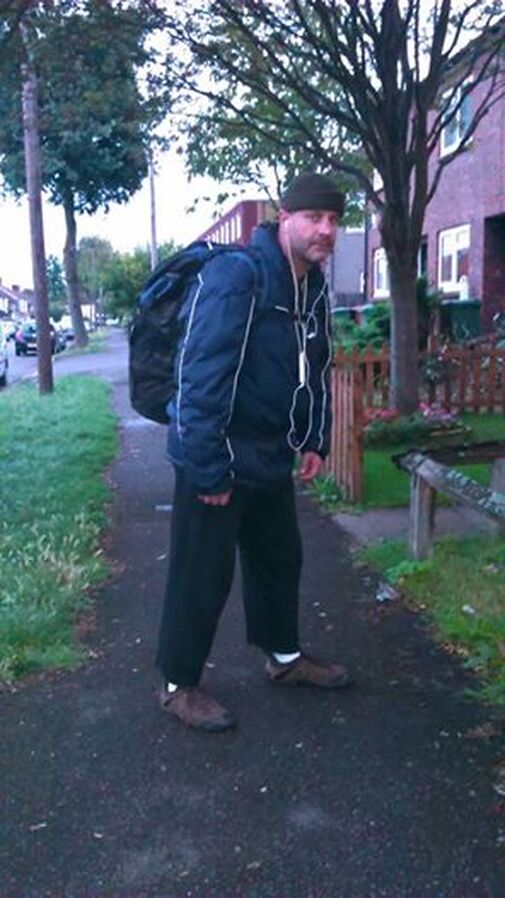
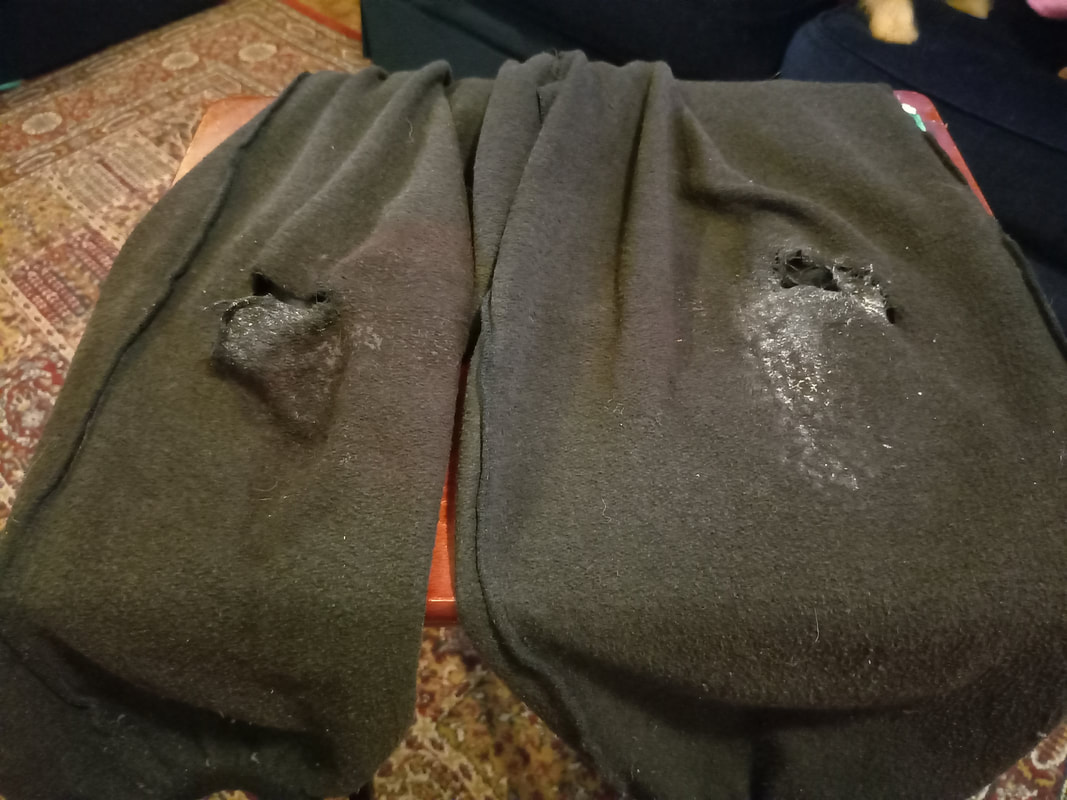
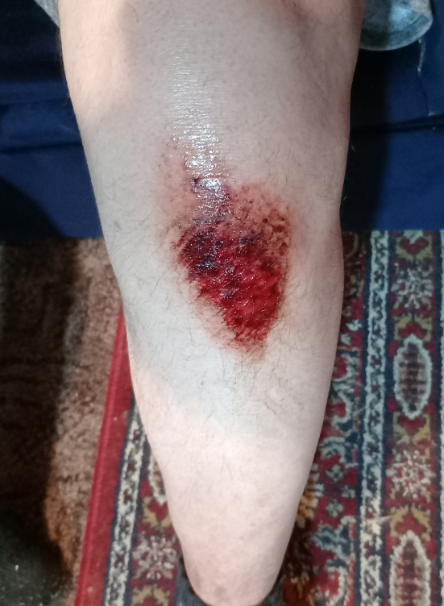
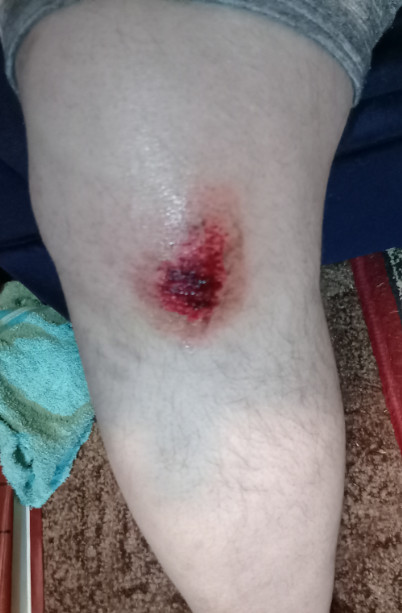

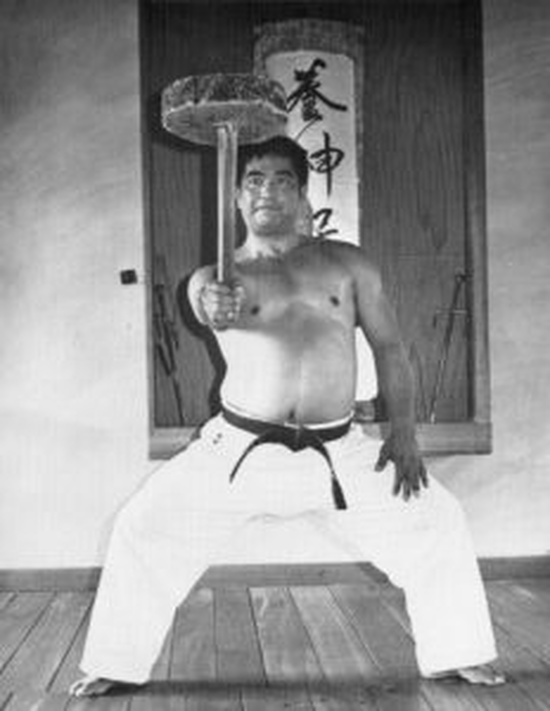
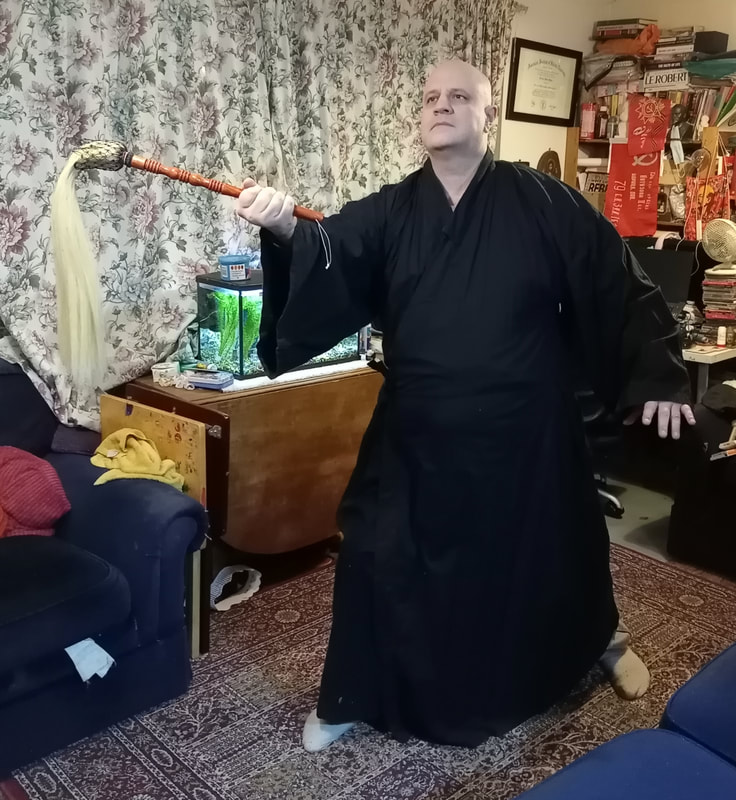
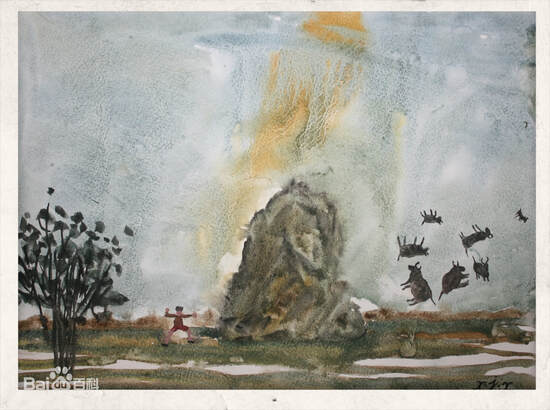
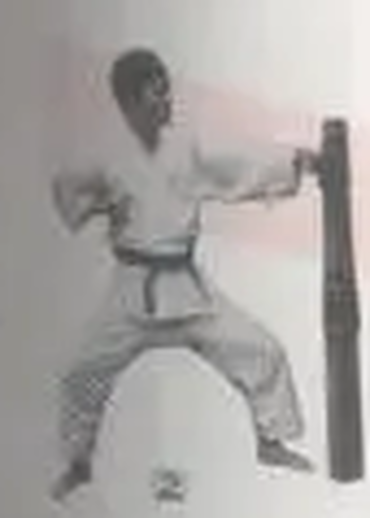
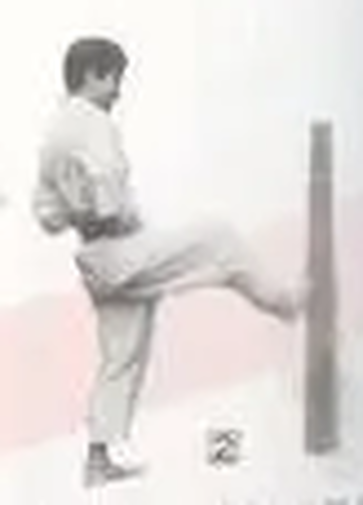
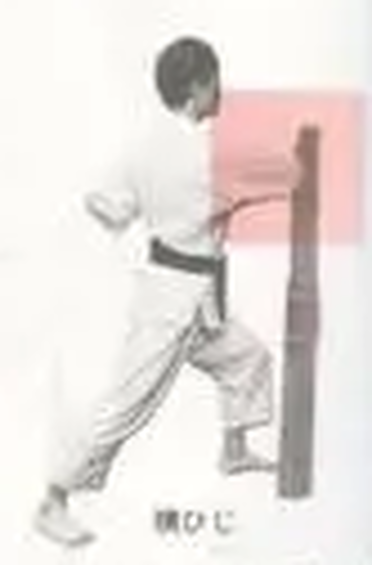
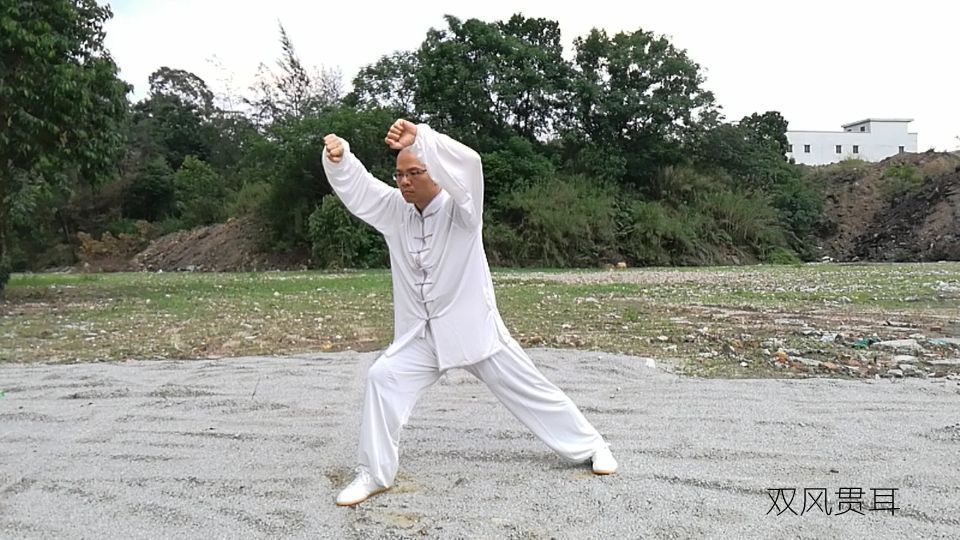
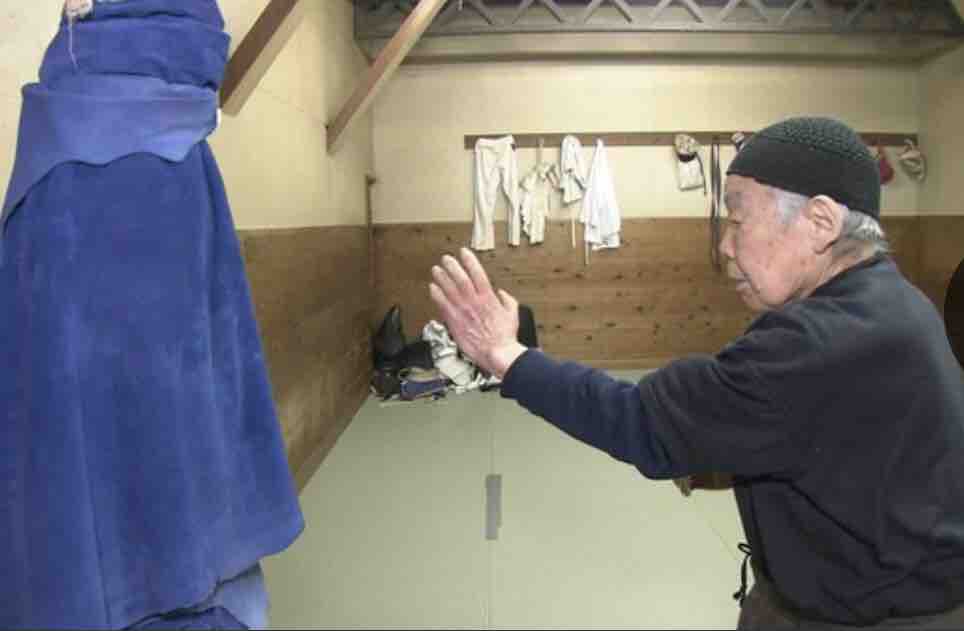
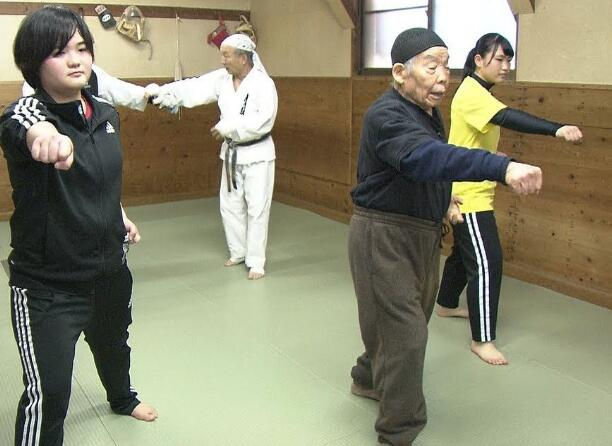
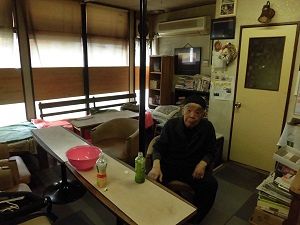
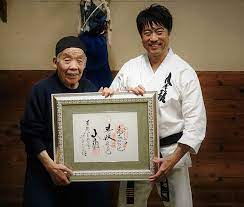
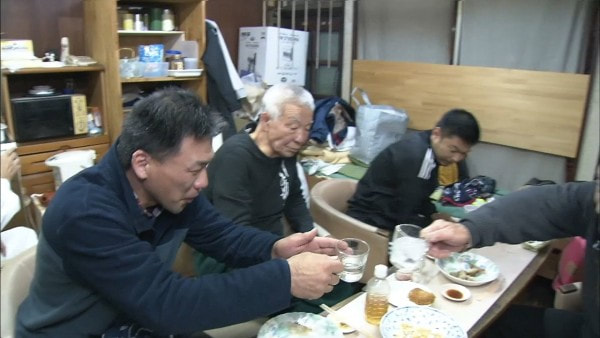
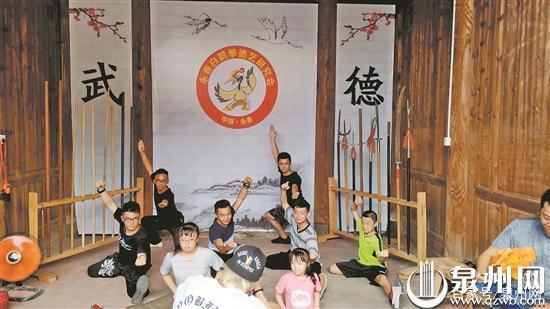
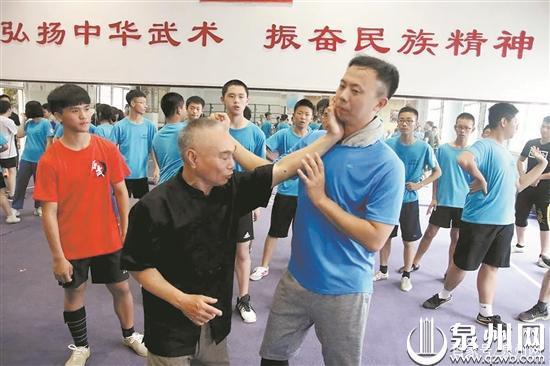
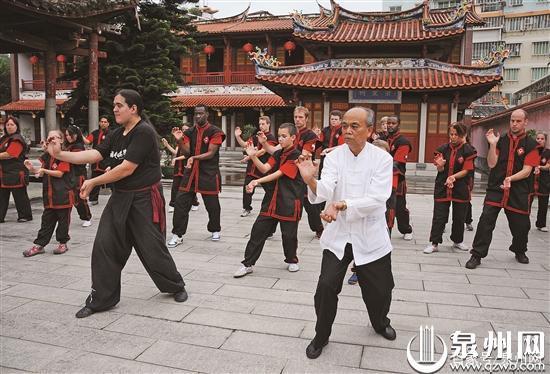
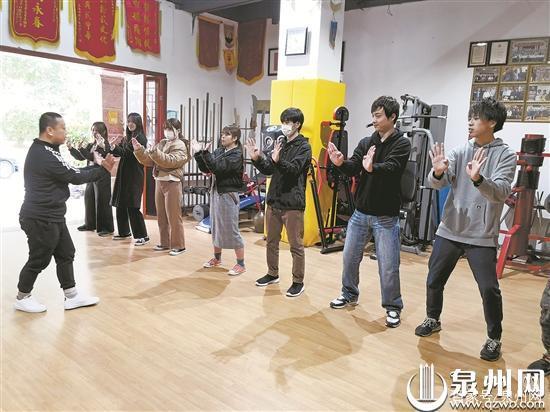
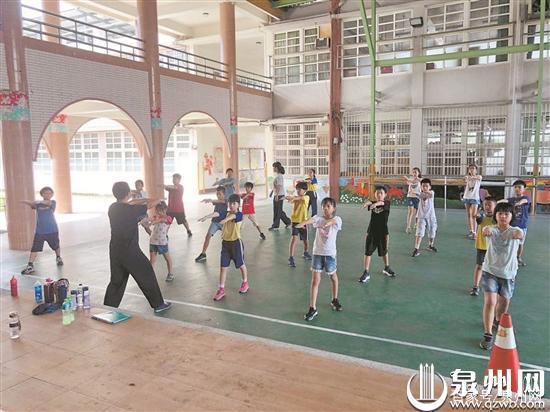
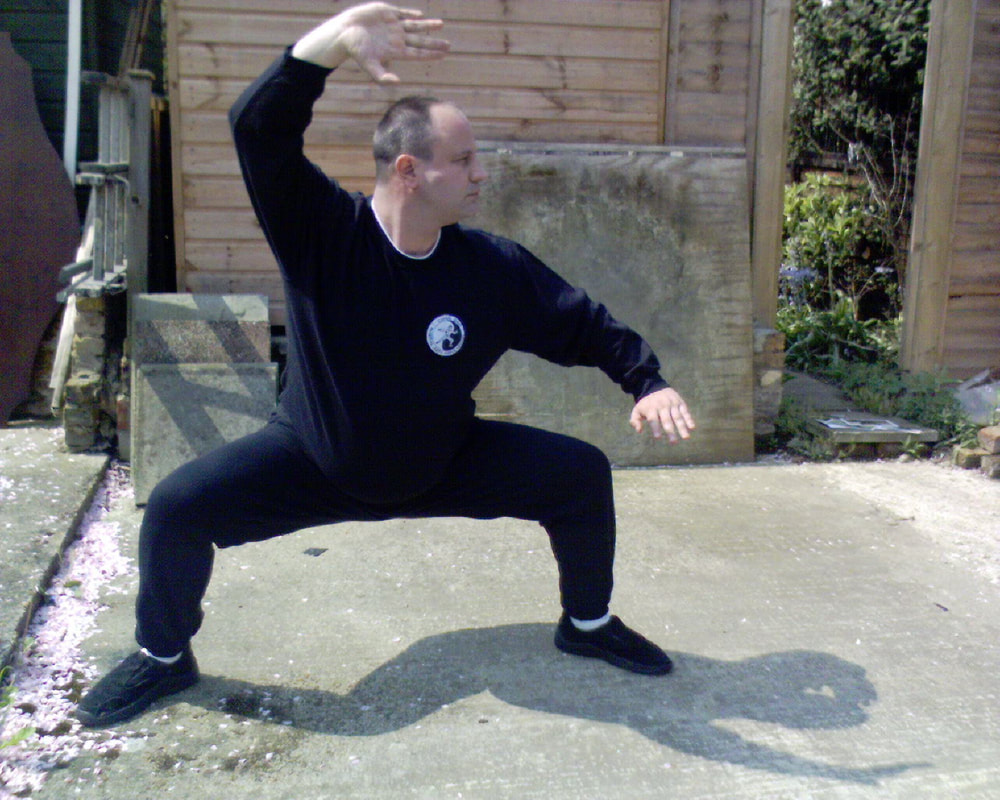
 RSS Feed
RSS Feed